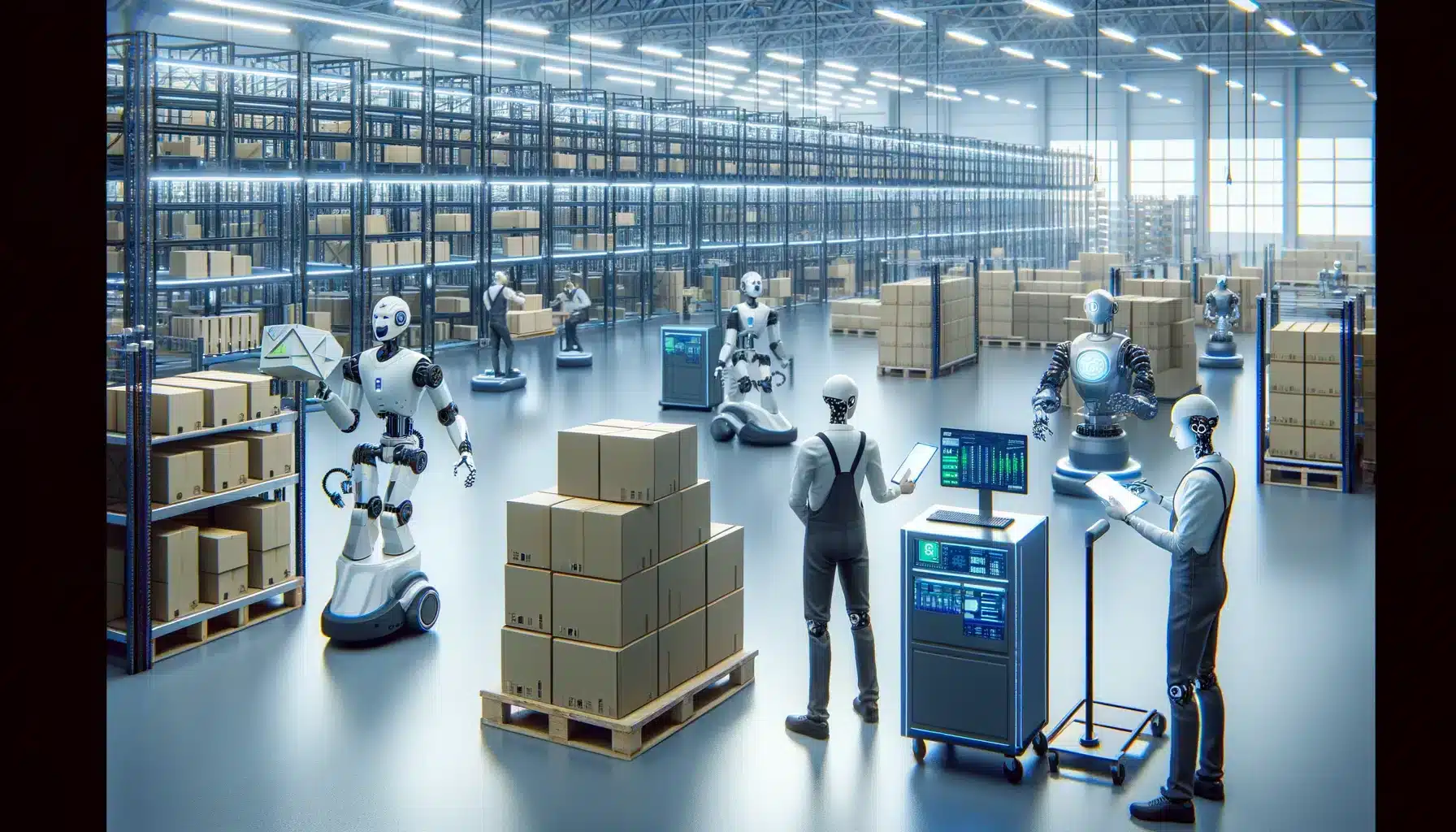Description
The Digital Transformation of Inventory Systems: What Storekeepers Need to Know
In the era of digital transformation, artificial intelligence (AI) and robotics are revolutionizing traditional inventory management practices. The integration of these advanced technologies into inventory processes is enabling industries to achieve unprecedented levels of accuracy and efficiency. This article delves into how AI and robotics are transforming inventory systems and what storekeepers need to know to adapt and thrive in this new landscape.
The Impact of AI in Inventory Management
Artificial intelligence is particularly adept at analyzing vast datasets with speed and accuracy. By utilizing predictive analytics, AI can forecast future inventory needs with remarkable precision. This capability allows companies to optimize their stock levels, avoiding the pitfalls of overstocking and stock-outs. Machine learning algorithms continuously refine these predictions by learning from historical trends and real-time data inputs. Moreover, AI enhances decision-making by offering actionable insights into customer purchasing patterns and identifying supply chain bottlenecks.
AI systems excel in several areas of inventory management:
- Predictive Analytics: AI systems analyze historical data and current trends to accurately predict future inventory requirements. This ensures that businesses can prepare adequately for upcoming demand.
- Optimization of Stock Levels: By forecasting demand accurately, AI helps maintain optimal stock levels. This reduces excess inventory, which ties up capital, and minimizes stock-outs, which can lead to lost sales.
- Enhanced Decision-Making: AI provides deep insights into customer behavior and supply chain inefficiencies, aiding storekeepers and managers in making strategic decisions.
- Continuous Improvement: Machine learning algorithms continuously adapt and improve over time, refining their predictions and enhancing overall efficiency in inventory management.
Case Studies: Robotics in Action
The implementation of robotics in inventory management has yielded impressive results across various industries.
Major Online Retailer
A prominent example is a major online retailer that has deployed over 200,000 robots in its warehouses. These robots streamline the picking and packing process, significantly reducing the time required to send items off for shipping. Working alongside human employees, these robots enhance productivity and accuracy in order fulfillment. The synergy between human workers and robots has led to a more efficient and error-free order processing system.
Global Beverage Company
Another notable case involves a global beverage company that utilizes robotic systems to manage its extensive inventory across more than one million square feet of storage space. These robots not only move and stack products but also perform real-time inventory audits using advanced scanning technologies. This integration has resulted in substantial reductions in labor costs and marked improvements in inventory tracking accuracy.
The benefits observed from robotic integration include:
- Increased Efficiency: Robotics automate repetitive tasks, accelerating processes and reducing the likelihood of human error.
- Real-Time Inventory Audits: Robots equipped with scanning technology can continuously conduct inventory checks, ensuring data accuracy and up-to-date records.
- Cost Savings: Automation reduces labor costs and minimizes losses due to inventory inaccuracies, thus enhancing overall profitability.
Implications for Storekeepers
The integration of AI and robotics significantly alters the role of storekeepers. Traditional tasks like manual counting and record-keeping are being replaced by system monitoring and data management roles. Storekeepers must now possess a blend of technical and interpersonal skills to navigate this technological shift.
New Skill Requirements
- Technical Proficiency: Storekeepers must learn to operate sophisticated software systems and troubleshoot minor technical issues. Familiarity with AI and robotic interfaces becomes essential.
- Data Management: Understanding basic data analytics is crucial for making informed decisions based on AI-generated insights. This includes interpreting predictive analytics and identifying trends.
- Interpersonal Skills: Effective coordination with IT and logistics teams is essential to ensure the seamless operation of integrated systems. Storekeepers must communicate effectively to address issues and optimize workflows.
Transitioning Roles
The role of storekeepers is evolving from manual inventory handling to overseeing automated systems:
- From Manual to Digital: Storekeepers’ responsibilities are shifting towards overseeing the functionality of automated systems and ensuring their smooth operation.
- Enhanced Coordination: Storekeepers must collaborate closely with various departments to ensure the effective integration of new technologies. This collaboration ensures that inventory management aligns with overall business strategies.
Preparing for a Technological Future
Embracing this technological shift requires both strategic planning and ongoing education. Companies must invest in training programs to equip their workforce with the necessary skills to handle new technologies.
Training and Development
- Technical Training: Programs should be established to teach employees how to use and maintain new inventory management systems effectively.
- Analytical Skills: Courses in data analysis and problem-solving can help storekeepers interpret AI-generated data and apply it to their daily operations.
- Continuous Learning: Ongoing education initiatives are crucial to keeping the workforce updated with technological advancements and industry best practices.
Strategic Planning
- Operational Reassessment: Businesses must reassess their operations to fully leverage the capabilities of AI and robotics. This involves identifying areas for improvement and potential technological upgrades.
- Workflow Redesign: Job roles may need to be redefined, and workflows adjusted to accommodate new technologies. This ensures that the integration is seamless and that all employees are aligned with the new processes.
- Leadership Commitment: Senior management must champion the technological transformation, fostering a culture of innovation and continuous improvement. Leadership support is crucial for successful implementation.
Implementation Steps
- Assess Current Capabilities: Evaluate existing inventory management processes to identify areas that could benefit from AI and robotic integration.
- Invest in Technology: Acquire AI and robotic systems that align with the business’s specific needs and objectives. Ensure that the technology is scalable and adaptable.
- Develop Training Programs: Create comprehensive training initiatives to upskill employees and prepare them for new roles.
- Monitor and Adapt: Continuously monitor the effectiveness of new technologies and make adjustments as necessary. Feedback loops can help identify areas for further improvement.
Conclusion
The digital transformation of inventory systems through AI and robotics offers storekeepers unprecedented opportunities to enhance accuracy, efficiency, and decision-making. By embracing these technologies, storekeepers can revolutionize their roles and contribute significantly to their organizations’ overall success. Adapting to this new landscape requires a strategic approach, ongoing education, and a commitment to continuous improvement. As the industry evolves, those who effectively integrate and leverage AI and robotics will be well-positioned to lead in the future of inventory management




